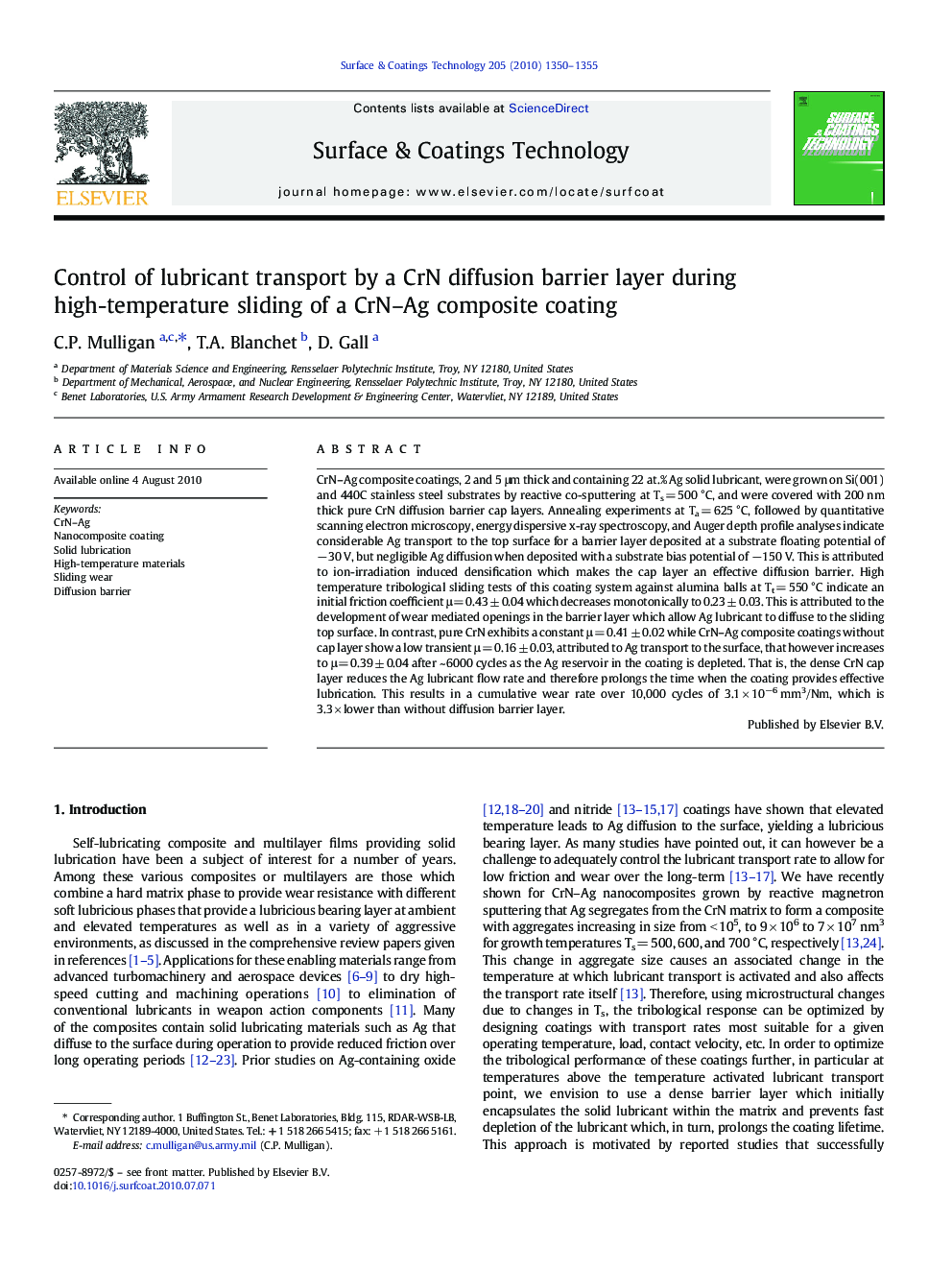| Article ID | Journal | Published Year | Pages | File Type |
|---|---|---|---|---|
| 1658792 | Surface and Coatings Technology | 2010 | 6 Pages |
Abstract
CrN-Ag composite coatings, 2 and 5 μm thick and containing 22 at.% Ag solid lubricant, were grown on Si(001) and 440C stainless steel substrates by reactive co-sputtering at Ts = 500 °C, and were covered with 200 nm thick pure CrN diffusion barrier cap layers. Annealing experiments at Ta = 625 °C, followed by quantitative scanning electron microscopy, energy dispersive x-ray spectroscopy, and Auger depth profile analyses indicate considerable Ag transport to the top surface for a barrier layer deposited at a substrate floating potential of â30 V, but negligible Ag diffusion when deposited with a substrate bias potential of â150 V. This is attributed to ion-irradiation induced densification which makes the cap layer an effective diffusion barrier. High temperature tribological sliding tests of this coating system against alumina balls at Tt = 550 °C indicate an initial friction coefficient μ = 0.43 ± 0.04 which decreases monotonically to 0.23 ± 0.03. This is attributed to the development of wear mediated openings in the barrier layer which allow Ag lubricant to diffuse to the sliding top surface. In contrast, pure CrN exhibits a constant μ = 0.41 ± 0.02 while CrN-Ag composite coatings without cap layer show a low transient μ = 0.16 ± 0.03, attributed to Ag transport to the surface, that however increases to μ = 0.39 ± 0.04 after ~ 6000 cycles as the Ag reservoir in the coating is depleted. That is, the dense CrN cap layer reduces the Ag lubricant flow rate and therefore prolongs the time when the coating provides effective lubrication. This results in a cumulative wear rate over 10,000 cycles of 3.1 Ã 10â6 mm3/Nm, which is 3.3 Ã lower than without diffusion barrier layer.
Keywords
Related Topics
Physical Sciences and Engineering
Materials Science
Nanotechnology
Authors
C.P. Mulligan, T.A. Blanchet, D. Gall,
